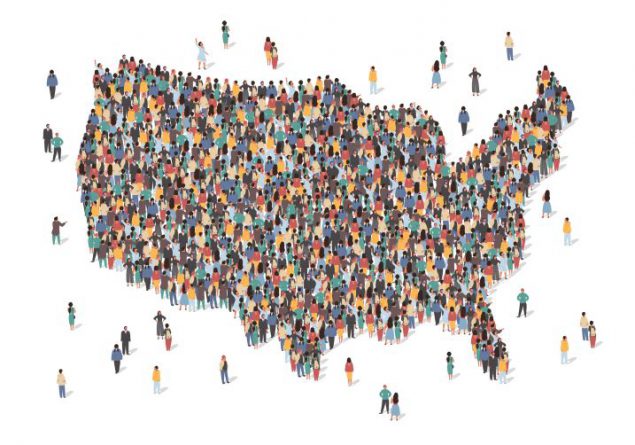Innovative Uses of SVI During COVID-19
In early 2020, the SARS-CoV-2 virus spread across the globe, and COVID-19 has now taken the lives of millions of people worldwide. In the United States, the COVID-19 pandemic has disproportionately affected communities of color. The Geospatial Research, Analysis, and Services Program’s (GRASP) CDC/ATSDR Social Vulnerability Index (CDC/ATSDR SVI) helps communities prepare for, respond to, and recover from public health emergencies by identifying socially vulnerable areas of the country based on factors such as socioeconomic status and race/ethnicity.
| check square solid icon | Public Health Impact: Social vulnerability increases health risks for many communities. These projects show how public health officials can use the CDC/ATSDR SVI and the expertise of GRASP team members to consider socially vulnerable populations’ locations and strategically allocate response efforts. |
| Partners: Massachusetts Department of Public Health; HHS Office of Minority Health; CDC COVID-19 Task Force; Office of the Surgeon General; National Institute of Environmental Health Sciences; North Carolina State University, and Texas A&M University. | |
| Expertise Provided: Database management, data visualization development, collaborations with federal and local public health institutions, interactive mapping, and project coordination. |
Key GRASP COVID-19 CDC/ATSDR SVI Projects and Collaborations
Throughout the COVID-19 pandemic, public health officials have used the CDC/ATSDR SVI to identify and support areas across the country that are at increased risk of becoming exposed to this highly contagious virus.
- The GRASP team collaborated with the Office of the Surgeon General to identify socially vulnerable Census areas as candidates for drive-thru, community-based SARS-CoV-2 testing locations. This effort helped establish an additional 240 COVID-19 testing locations in 33 states, with 69% of these testing locations placed in communities with moderate to high social vulnerability, as measured by the CDC/ATSDR SVI.
- The GRASP team used CDC/ATSDR’s SVI to collaborate with the Massachusetts Department of Public Health to identify COVID-19 testing disparities. Through this collaboration, Massachusetts public health officials could direct testing resources to communities that had limited testing capacity.
- GRASP team members also worked with the HHS Office of Minority Health (OMH) to leverage CDC/ATSDR’s SVI to focus COVID-19 resources on racial/ethnic minority communities disproportionately affected by the COVID-19 pandemic. As accumulating data indicated that communities of color were being disproportionately affected by COVID-19, it became clear that specialized tools for communication with these communities would be needed. Information from the CDC/ATSDR SVI helped guide the CDC COVID response in creating materials and tools to reach these populations. This initial partnership between GRASP and HHS OMH became an ongoing collaboration that aims to continue outreach to improve health equity for communities of color and other under-resourced populations.
- The GRASP team worked with a CDC COVID-19 response task force on vaccine allocation plans. This work was published in an MMWR article,Association Between Social Vulnerability and a County’s Risk for Becoming a COVID-19 Hotspot — United States, June 1–July 25, 2020, reporting that counties with high social vulnerability were more likely to become COVID-19 hot spots. This work emphasized the importance of considering social vulnerability in the pandemic response and provided information that could be used in vaccine allocation and planning.
- GRASP also worked on a project that assessed “stay-at-home” behaviors during periods of viral spread in communities with high social vulnerability. Findings will be published, shared with other experts, and used to prioritize additional resources for controlling and preventing outbreaks in these communities. These resources include support for distributing testing supplies, assigning contact tracers, strategically allocating vaccines, and distributing masks.
The Use of CDC/ATSDR SVI in Science and the Media
Since the start of the pandemic CDC/ATSDR SVI has been referenced in hundreds of journal articles. It has also appeared in thousands of media outlets targeting business and finance professionals, healthcare workers, the government, and universities.
The National Academies of Science, Engineering, and Medicine recommended that local and federal public health officials rely on the CDC/ATSDR SVI databases to inform their efforts to allocate, distribute, and administer the COVID-19 vaccine in socially vulnerable communities. In addition, scientists from the National Institute of Environmental Health Sciences, North Carolina State University, and Texas A&M University developed the COVID-19 Pandemic Vulnerability Index,external icon which includes several CDC/ATSDR SVI components such as race and population density.
Journal article references of CDC/ATSDR SVI demonstrate how widely used the index has been in science fields. In addition, Local, regional, and national media outlets also reference CDC/ATSDR SVI as a valuable resource for understanding where vulnerable populations live and their access to testing centers and vaccine allocation locations.
The use of CDC/ATSDR SVI during the pandemic represents a commitment to equitable COVID-19 public health policies and practices. These examples illustrate how socially vulnerable communities are being incorporated into key public health decision making and activities.


